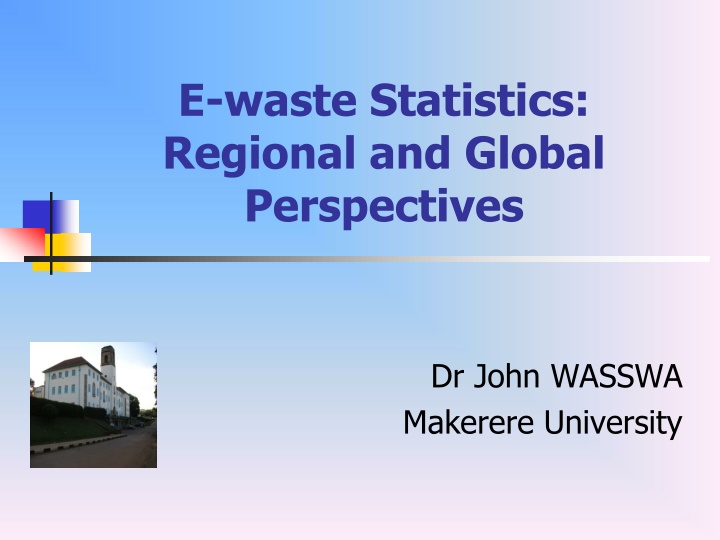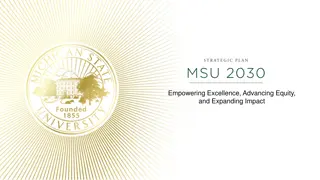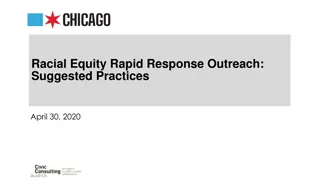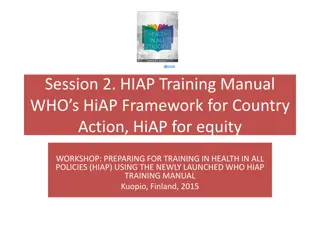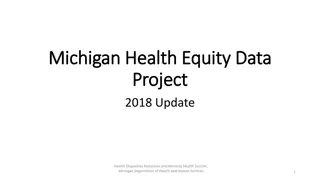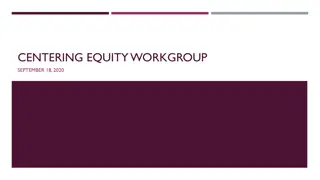Measuring Health Equity: Patient Demographic Training Session
"Join us for a training session at [Insert Hospital Name Here] to learn about collecting patient demographic information for measuring health equity. Explore topics such as health equity statistics, data collection techniques, and group work principles. Enhance your understanding of health inequities and why demographic data is crucial in healthcare settings. Engage in interactive activities and discussions to promote a more equitable healthcare system."
Download Presentation

Please find below an Image/Link to download the presentation.
The content on the website is provided AS IS for your information and personal use only. It may not be sold, licensed, or shared on other websites without obtaining consent from the author.If you encounter any issues during the download, it is possible that the publisher has removed the file from their server.
You are allowed to download the files provided on this website for personal or commercial use, subject to the condition that they are used lawfully. All files are the property of their respective owners.
The content on the website is provided AS IS for your information and personal use only. It may not be sold, licensed, or shared on other websites without obtaining consent from the author.
E N D
Presentation Transcript
E-waste Statistics: Regional and Global Perspectives Dr John WASSWA Makerere University
Scope Stool pigeon The Global E-waste Monitor 2017 Country E-waste Status and Trends (Obsolete) Research Publications Standards and Methodologies to Measure E- waste Challenges
Global e-waste generated 60 50 World Total (Mt) 52.2 50.9 49 47.6 44.7 40 42.3 41 30 46 20 10 0 2014 2015 2016 2017 2018 2019 2020 2021 Annual growth rate of 3 to 4%.
By January 2017, appro 4.8 billion people were covered by national legislation, which is 66% of the world population.
E-waste generation and collection per continent
E-waste in Africa Domestic e-waste generation was approx 2.2 Mt, with contributions from Egypt (0.5 Mt), South Africa and Algeria (each 0.3 Mt) ranking highest.
Little information is available on the amount of e- waste documented that is collected and recycled by the formal sector in Africa
E-Waste in E- African Region Need on update of statistics Kenya Uganda Tanzania Rwanda Burundi South Sudan
Indicators Indicator 1: Total EEE Put on the Market Indicator 2: Total E-waste Generated Indicator 3: E-waste Officially Collected and Recycled Indicator 4: E-waste Collection Rate
Classifications for E-waste Temperature exchange equipment. Screens, monitors. Lamps Large equipment. Small equipment. Small IT and telecommunication equipment.
Measuring Framework of E-waste Statistics Phase 1: Market Entry Data can come from statistics on sales from a national e-waste registry for compliance with the Extended Producer Responsibility, or if not available, it can be measured with the apparent consumption method
Phase 2: Stock The stock of EEE can be determined using household or business surveys on a national level. If that data is not available, it can be calculated using the sales information and the time the equipment spends in the stock phase, called the product s residence time .
Phase 3: E-waste Generated When the product becomes obsolete to its final owner, is disposed of, and turns to waste, referred to as e-waste generated . It is the annual supply of domestically generated e-waste prior to collection, without imports of externally generated EEE waste. The outcomes of e-waste generated are an important indicator for e-waste statistics.
Phase 4: E-waste Management E-waste Collection Scenario 1: The Official Take-Back System Under the requirement of national e-waste legislation, e-waste is collected by designated organizations, producers, and/or the government.
E-waste Collection Scenario 2: Mixed Residual Waste In this scenario, consumers directly dispose of e-waste through normal dustbins with other types of household waste. As a consequence, the disposed of e- waste is then treated with the regular mixed-waste from households.
Scenarios 3+4: The Collection Outside the Official Take-Back System Countries with Developed Waste Management Possible destinations for e-waste in this scenario include metal recycling, plastic recycling, specialized e-waste recycling, and also exportation. Countries With No Developed Waste Management Infrastructure
Countries With No Developed Waste Management Infrastructure In most developing countries, there is an enormous number of self-employed people who are engaged in the collection and recycling of e-waste. They usually work door-to-door to buy e-waste from consumers at home, and then sell it to be refurbished and recycled.
The Challenges Lack of data especially from customs and distributors The informal sector Branded Vs counterfeit
Thank you very much for your kind attention
